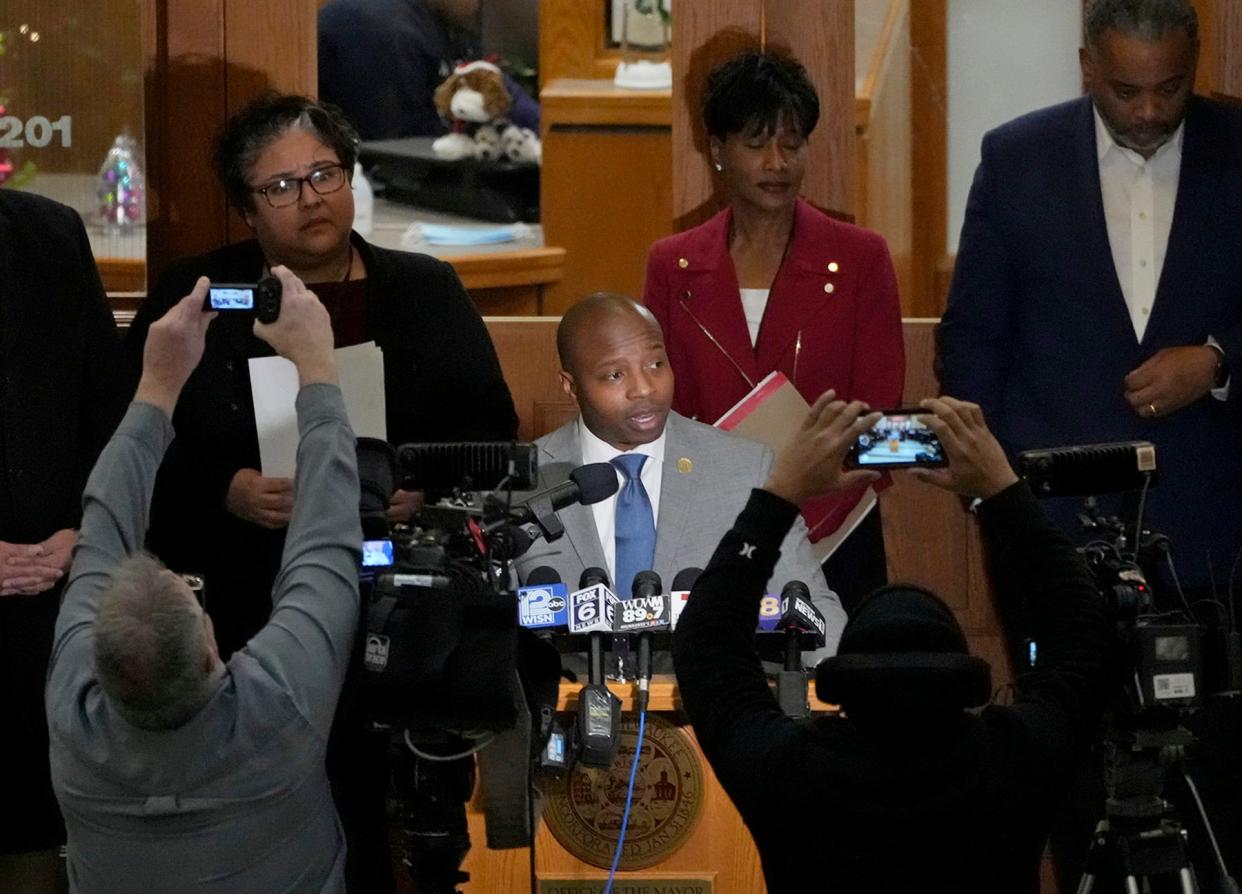Milwaukee is challenging its census numbers. Here are five things to know.

- Oops!Something went wrong.Please try again later.
Milwaukee is looking to "set the record straight" with its formal challenge of the 2020 U.S. Census that charted a drop in the city's population in the decade since the previous survey, Mayor Cavalier Johnson said this week.
He argued the population has remained relatively stable at nearly 600,000 residents instead reflecting the census' finding that more than 17,000 people had left the city since 2010.
"Much has been made over the previous two years of the city of Milwaukee census population totals showing a declining population. By submitting this formal challenge with the United States Census Bureau, we are here to set the record straight," Johnson said during a news conference Tuesday at City Hall.
Here's what you should now about why the nationwide once-a-decade survey matters to Milwaukee and how the city is challenging the numbers.
What is the U.S. Census?
The census is a once-a-decade survey to tally all U.S. residents.
The 2020 Census aimed to count the population as of April 1, 2020, and it differed in a few key ways from previous surveys.
It faced a series of challenges, including shifting deadlines, funding problems, and difficulty hiring the required number of census workers to collect the data. And while then-President Donald Trump failed to get a citizenship question on the questionnaire, there were concerns the effort still may have scared people away. The administration's decision to end the count early in light of the COVID-19 pandemic was also seen by some as a political maneuver.
Why are the census numbers important?
The census is about more than just determining the U.S. population and showing how communities are changing demographically.
The findings of the survey also define how congressional, state legislative and local electoral district maps are redrawn and how federal funding is allocated for the next 10 years.
Johnson argued the federal funds are particularly critical as the city faces increasingly difficult budgets. They are used to provide access to affordable housing and support nonprofit organizations in addition to funding Milwaukee Public Schools, he said.
What did the 2020 census say about Milwaukee's population?
The 2020 census found that the city lost nearly 3% of its population in the preceding 10 years, leaving it at its lowest population since 1930.
The count said Milwaukee's population had dropped from 594,833 in the 2010 census to 577,222 in the 2020 census — a decrease of 17,611 residents or nearly 3%.
It also found that Milwaukee and Milwaukee County have become increasingly racially diverse over the last 10 years, with significant increases among residents who identify as Hispanic, Asian or two or more races in the recent survey. White and Black communities saw considerable decreases.
Then-Milwaukee Mayor Tom Barrett questioned the population drop when the results were announced in August 2021, and Johnson has taken up the issue during his year in office.
How are city officials challenging the tally?
City officials argue the census undercounted the total housing units in Milwaukee by 2,394 and likely over-counted vacant units by about 4,055 for a total of about 15,800 people, Johnson wrote in a five-page letter to U.S. Census Bureau Director Robert Santos.
They also argue about 700 people held in the Milwaukee County Jail downtown were instead counted as being in custody at the Milwaukee County House of Correction in Franklin.
In all, they believe Milwaukee’s April 1, 2020, population was approximately 593,722 ― 16,500 residents more than the census counted.
And they say the undercount occurred primarily in communities of color, specifically in the Black and Hispanic populations, based on the Census Bureau's own post-count analysis.
"In a large and diverse city like Milwaukee, this significant undercount that has occurred in communities of color deserves immediate attention," Ald. JoCasta Zamarripa and Common Council President José G. Pérez said in a statement backing the challenge Wednesday.
What is the timeline for the census to respond to the city's challenge?
That’s up in the air.
The deadline for the U.S. Census Bureau to provide results to impacted governments is Sept. 30, 2023, but the goal is to respond within 90 days of receiving a case submission, according to a December 2021 post on the bureau's website.
“The timetable is fluid,” said Jordan Primakow, the legislative fiscal manager for the City of Milwaukee. “The U.S. Census Bureau takes these cases on a first-come, first-served basis.”
Milwaukee joins other cities including Detroit and Boston in challenging the findings of the nationwide survey.
Our subscribers make this reporting possible. Please consider supporting local journalism by subscribing to the Journal Sentinel at jsonline.com/deal.
DOWNLOAD THE APP: Get the latest news, sports and more
This article originally appeared on Milwaukee Journal Sentinel: Five things to know about Milwaukee's census challenge

